Amish Recipe For Canning Cabbage
Did you grow cabbage in your garden this year? Here's a yummy way to preserve it by learning how to make Sauerkraut!
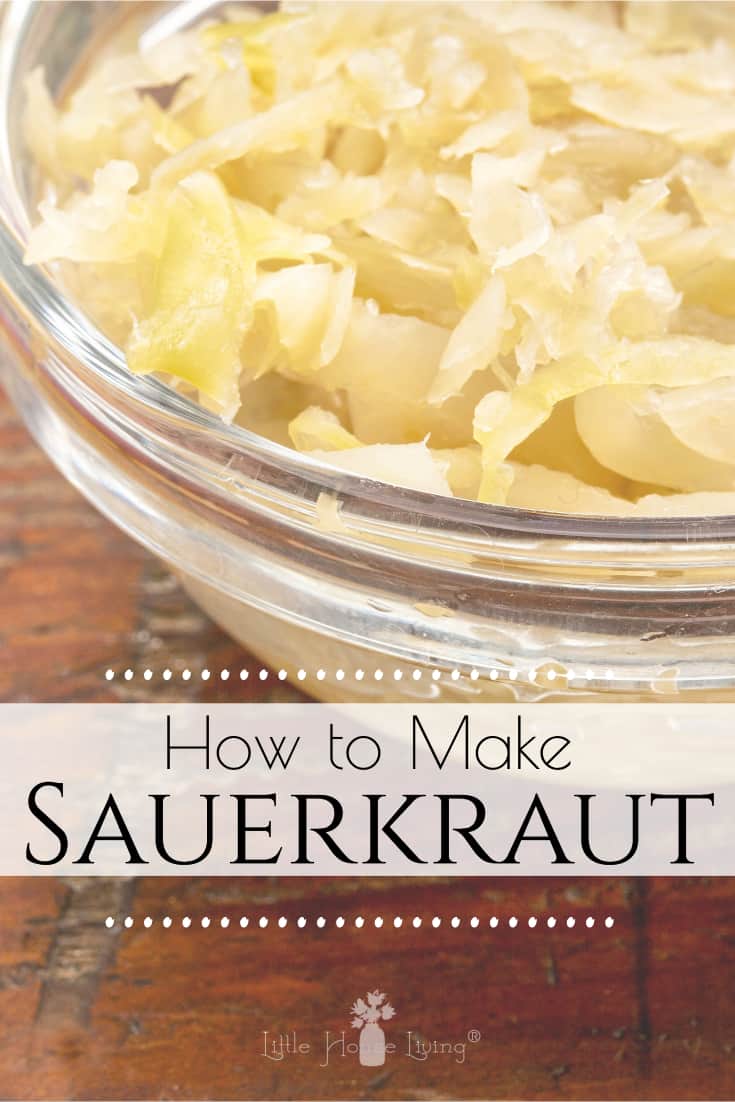
Canning Cabbage
Sauerkraut is a thinly sliced cabbage that has been fermented. In German, the word sauerkraut literally translates to "sour cabbage." This recipe requires very few ingredients as the fermentation process happens naturally once the sugars in the cabbage begin to break down and produce lactic acid.
The National Center for Home Food Preservation does not recommend canning plain cabbage. The recipe below for easy sauerkraut is a great alternative way to preserve your cabbage.
NCHFP recommends fermenting your sauerkraut before canning it. Once you follow the method below, then you can follow the instructions here on how to can fermented sauerkraut. The following tutorial is based off trusted recipes (found at the bottom of the post) and methods for fermenting and I have taken the Fermentation class from my state's extension office to verify the information.
One more thing…do not use salt with any kind of additives. A pickling or kosher salt will work just fine for this recipe.
Have fun making this kraut! It could be the German in me but I absolutely love a good dish of fermented sauerkraut. I definitely have eaten it for breakfast more than once. 😉
How to Make Sauerkraut
What You Need:
- 5 lbs Cabbage
- 3 tablespoons Salt
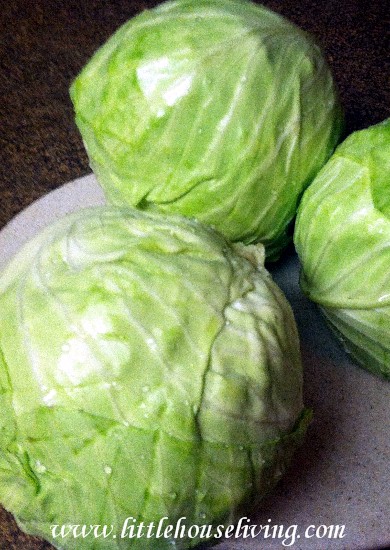
Rinse your cabbage and remove the outer leaves that may have dents or abrasions.
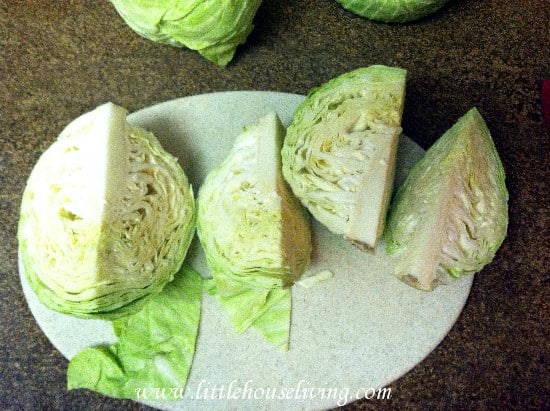
Starting at the bottom cut each into 4 quarters. This makes it a little easier to then remove the inner core of the cabbage and discard.
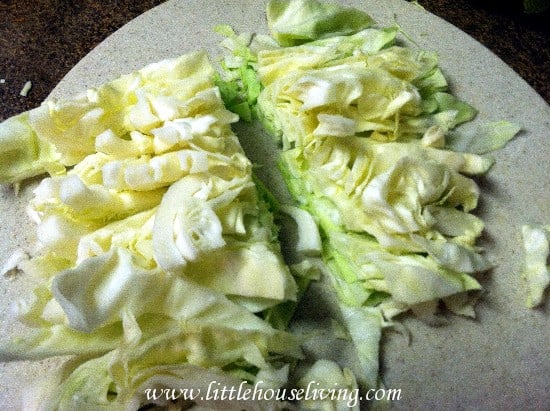
Continue to cut the cabbage in thin strips. Cut those strips in half as well.
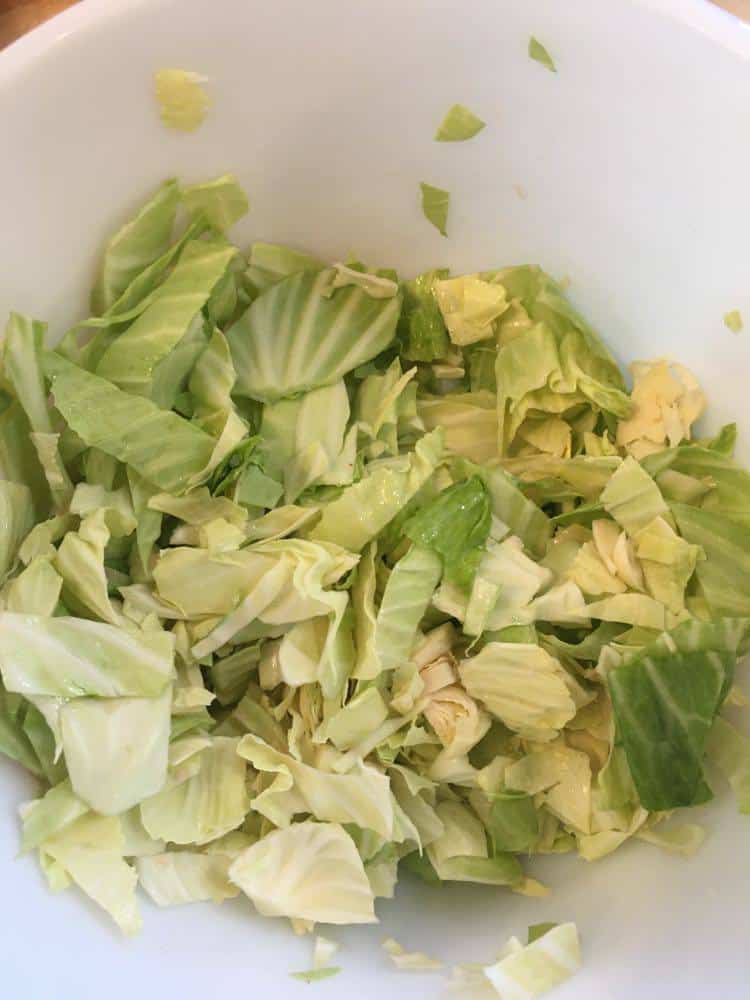
Place the shredded cabbage into a large bowl and sprinkle the salt on top. Let it sit (covered with a cloth) for at least 30 minutes to get the juices flowing. (I stir mine around every 20 minutes or so to keep the salt moving around the cabbage.)
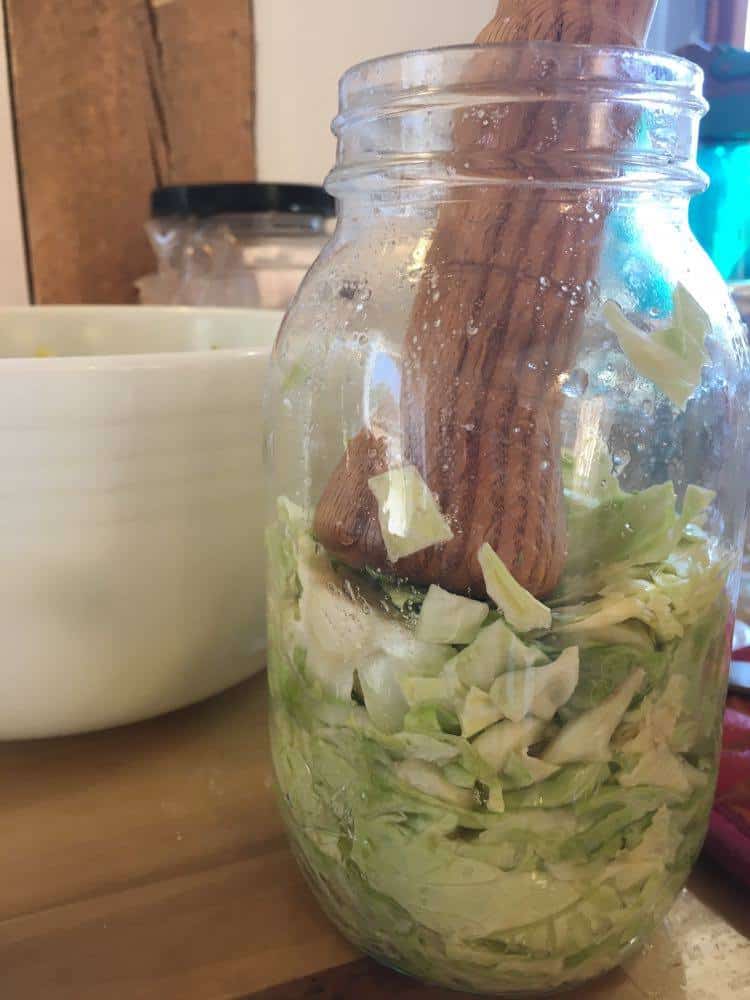
Begin putting the cabbage into your jars and pounding it down as well as you can with some kind of kraut pounder or your hand. You want this to be packed as tightly as it can be and during this time you should see the juices coming up to the top.
Be sure and leave a gap of 4-5 inches of headspace from the top of the cabbage to the top of the jar. You may have less headspace if using mason jars. Use as many containers/jars as needed.
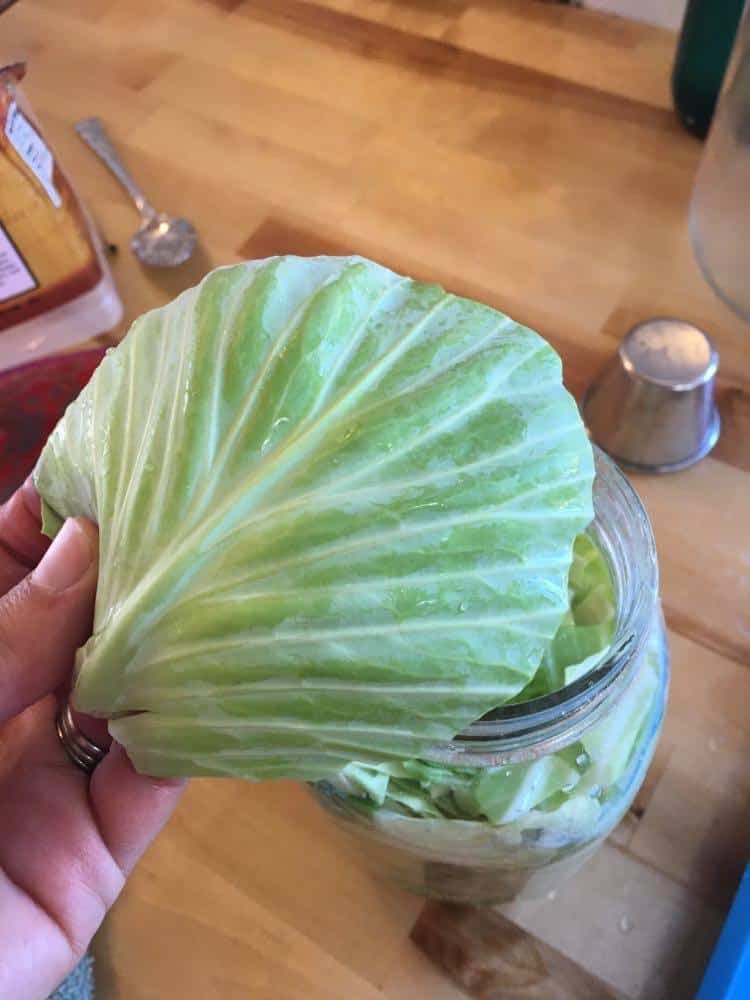
This step is not required, but I like to take one of my cabbage leaves and place it on top of the shredded cabbage. It helps to keep the "floaters" to a minimum.
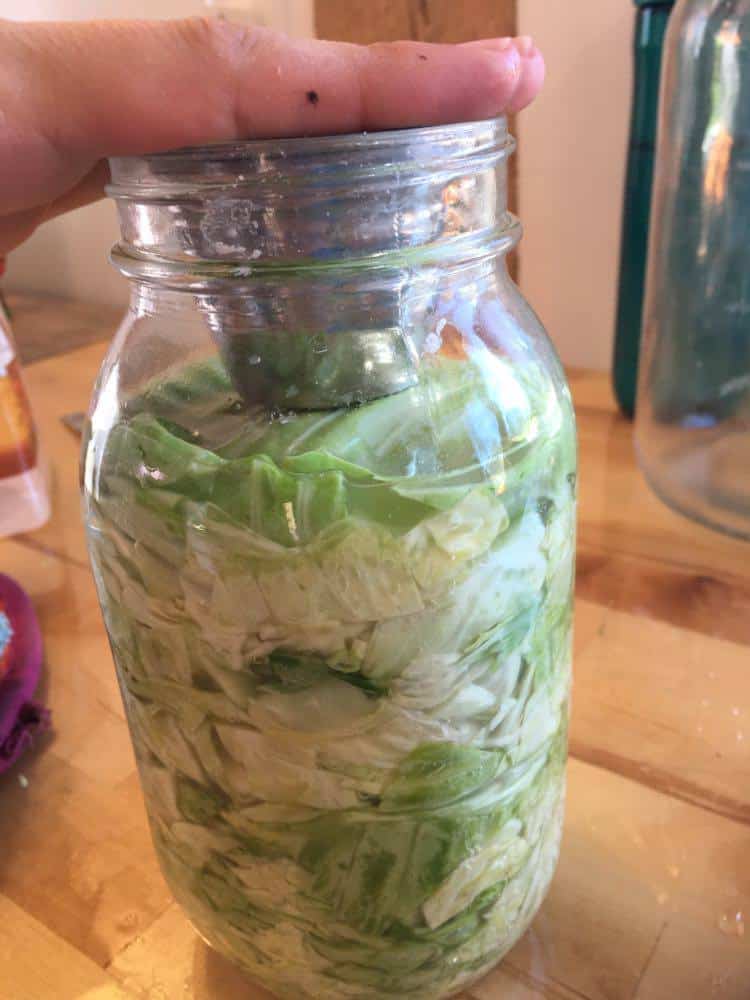
Place a weight on top of your cabbage, making sure that the cabbage juices over the vegetables. If you do not have enough to cover the cabbage, you can make a brine with 4 cups of water and 1 1/2 tablespoons of salt. It's good to have at least 1-2 inches of liquid on top of your cabbage.
The type of weight you use will depend on what you are using to ferment with. I have Perfect Pickler Lids that I bought from Lehmans so mine comes with a stainless steel "cup" to weight things down. A crock will have stone weights and you can also get glass weights as well.
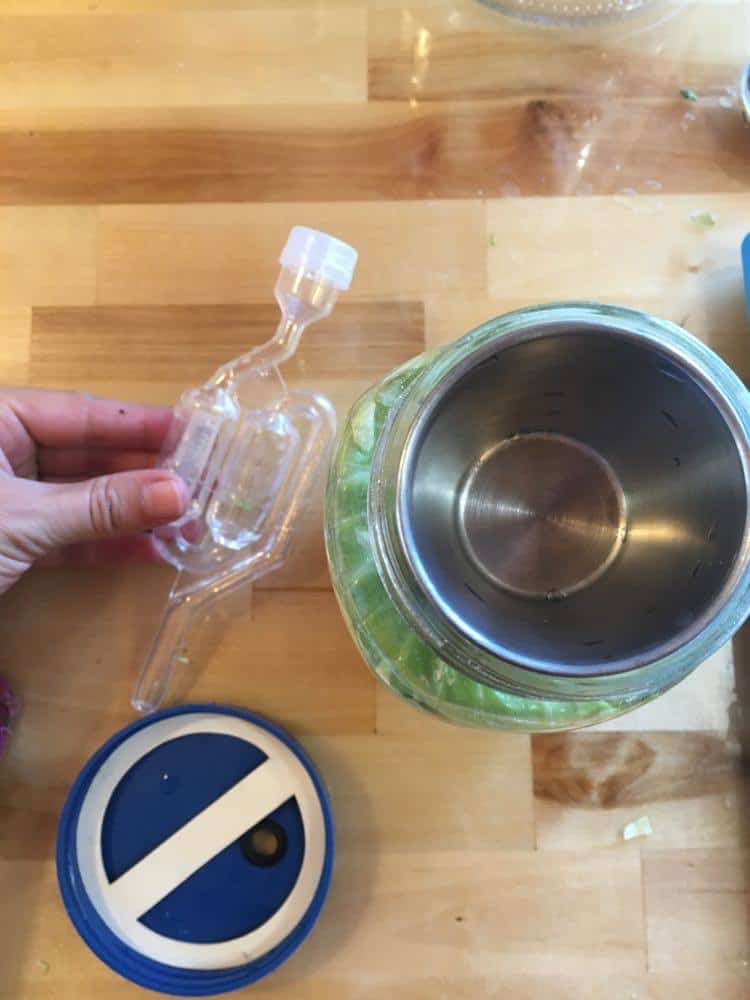
How you top off your jar will also depend on the system you are using. Follow the instructions with your system or if you are using a crock, place a cloth over the top so that nothing can get in. Above you can see the top to my Perfect Pickler System.
Put the sauerkraut in a dark room with a temp not above 75 degrees F to ferment. It will take about 3-4 weeks to be completely fermented and you will know when it's ready by when it stops bubbling.
Check on your kraut daily and if you ever see anything scummy on top, remove it gently. If the ferment smells bad or gets a significant amount of mold, throw it out.
If you are looking for a good video on how to make sauerkraut, be sure and watch this one from the Alaska Extension Offices.
Preserving Sauerkraut
Once you've finished fermenting your cabbage and have made sauerkraut, you can store it in the fridge or you can preserve it! Follow these tested instructions on how to can sauerkraut from NCHFP.
You can also freeze the sauerkraut or store it in a root cellar. It can be kept in the fridge for several months as well.
*Contact your local extension office for information on altitude/temp/timing changes for all canning, fermenting, and preserving recipes.
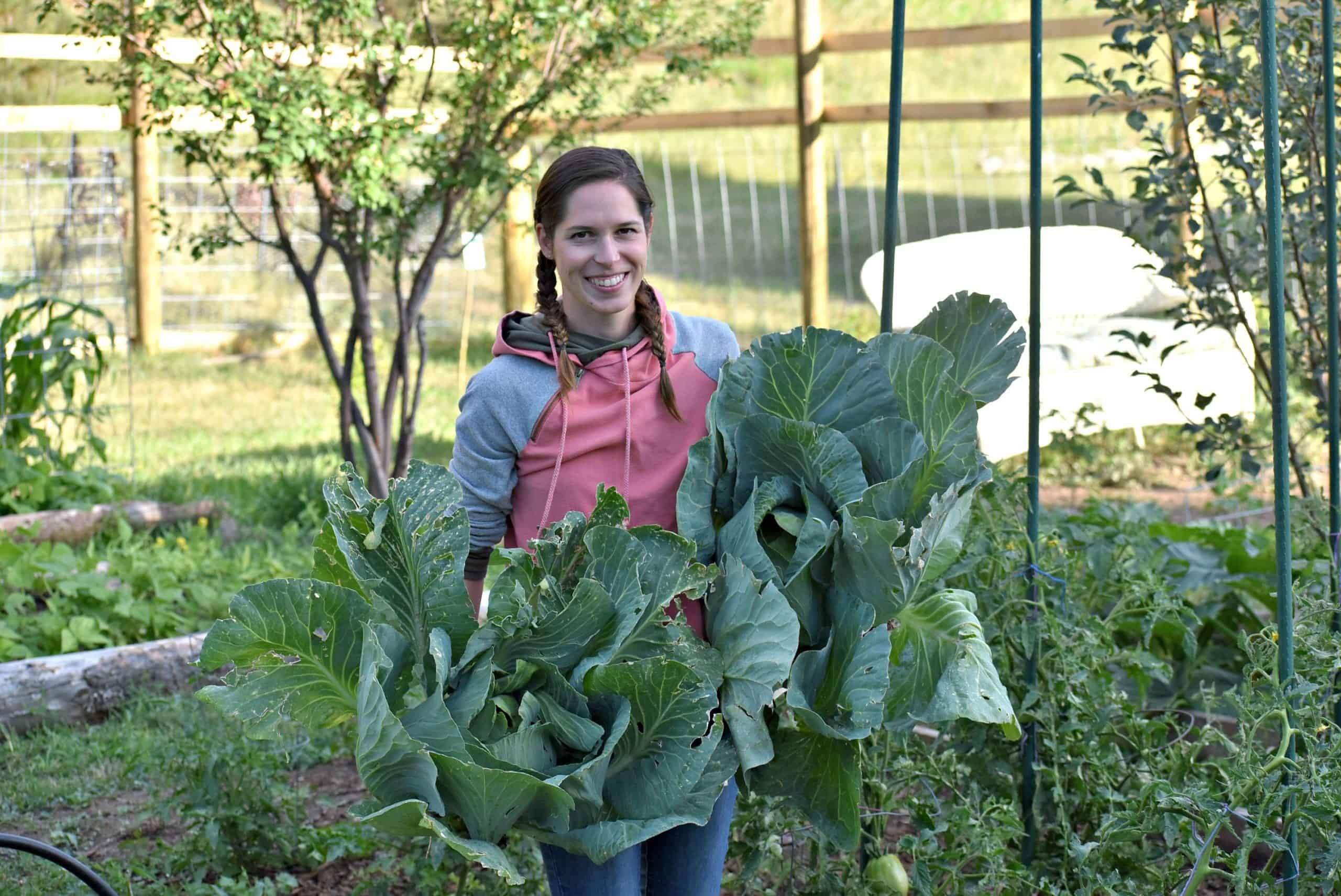
Another Method of Preserving Cabbage
If you're looking for another way to preserve cabbage, you can also freeze it. Simply shred your cabbage and place it in a freezer bag. Any preserved cabbage will discolor over time and this is natural.

Make sure you check out all the free Canning and Preserving Recipes we have on Little House Living!
I recommend aPresto Pressure Canner and the Ball Blue Book for all your canning projects!
Looking for more recipes using cabbage? Check these out.
How to Make Coleslaw From Scratch
Homemade Egg Rolls
Homemade Vegetable Soup
Have you ever tried canning cabbage or making your own homemade sauerkraut? How did it turn out?

This post on Canning Cabbage (How to Make Sauerkraut) was originally posted on Little House Living in August 2013. It has been updated as of July 2020.
These instructions can also be found in:
Ball / Bernardin Complete Book of Home Preserving
Ball Blue Book. Muncie, Indiana: Healthmark LLC / Jarden Home Brands. Edition 37. 2014. Page 76.
So Easy to Preserve. University of Georgia Cooperative Extension. Elizabeth L. Andress and Judy A. Harrison. Bulletin 989. Sixth Edition. 2014. Pp 149-150.

Amish Recipe For Canning Cabbage
Source: https://www.littlehouseliving.com/canning-cabbage-how-to-make-sauerkraut.html
Posted by: oakeshispers.blogspot.com

0 Response to "Amish Recipe For Canning Cabbage"
Post a Comment